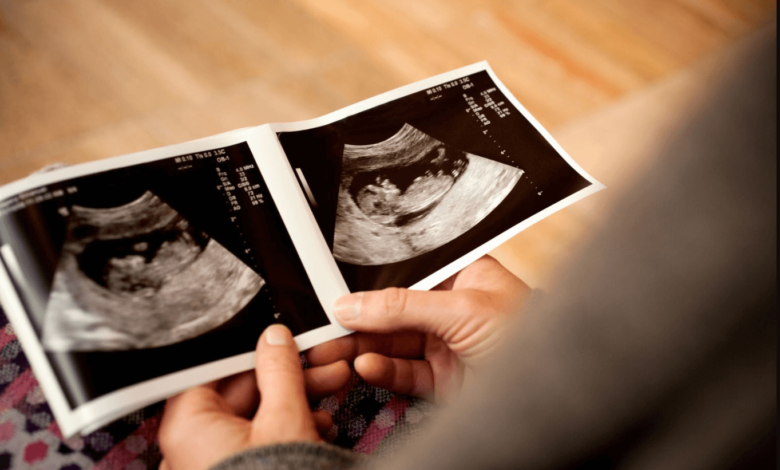Boy or Girl Ultrasound: Decoding the Science Behind Gender Determination

In the journey of parenthood, one of the most exciting moments for expectant parents is the anticipation of knowing whether they are having a boy or a girl. Thanks to advancements in medical technology, the “boy or girl ultrasound” has become a common and eagerly awaited procedure for many. This article will delve into the fascinating world of ultrasound gender determination and explore the science, accuracy, cultural significance, and more.
The Science Behind Ultrasound Gender Determination
Ultrasound technology, which has revolutionized the field of obstetrics, is the key to determining an unborn baby’s gender. It operates on the principle of high-frequency sound waves that bounce off objects to create an image. The differences in how these sound waves interact with various tissues in the body allow medical professionals to visualize the baby in the womb.
When Can You Find Out the Gender?
Typically, the gender of the baby can be determined during the second trimester, around 18 to 20 weeks of pregnancy. At this point, the genitals have developed sufficiently to be visible on the ultrasound.
How Does the Boy or Girl Ultrasound Work?
A trained sonographer or ultrasound technician will apply a special gel to the mother’s abdomen during the ultrasound procedure. This gel helps transmit sound waves and prevents air bubbles from interfering with the image. A transducer is then moved over the gel-covered area, emitting sound waves that produce an image of the baby on a screen. Examining the genital area, the technician can often identify whether it’s a boy or a girl.
Preparing for the Ultrasound
To get the most accurate results, it’s essential to be well-prepared. Drinking plenty of water before the appointment is advisable, as a full bladder provides a clearer view of the fetus. Wear comfortable clothing, as you may need to expose your abdomen.
The Ultrasound Procedure
The ultrasound procedure itself is painless and non-invasive. The technician will gently glide the transducer over your abdomen. You’ll get to see your baby’s movements and possibly hear the heartbeat. The most exciting moment, of course, is when the technician reveals the gender!
Gender Reveal Parties
Ultrasound gender determination has created a delightful trend: gender reveal parties. Expectant parents often choose creative ways to announce the gender of their baby to friends and family. These memorable celebrations bring loved ones closer to the joy of welcoming a new life.
Accuracy of Ultrasound Gender Determination
While ultrasound is highly accurate, it’s not infallible. Errors can occur due to various factors, such as the baby’s position or the technician’s experience. However, in most cases, the accuracy rate is impressively high.
Can Ultrasound Determine Gender Early in Pregnancy?
Some parents are eager to know the gender as early as possible. While there are methods claiming to determine gender in the first trimester, they are not as reliable as the second-trimester ultrasound. The earlier the attempt, the higher the chances of error.
Cultural Significance
The gender of a baby can carry cultural significance for many families. Some cultures place great emphasis on the sex of the child, and the reveal can be a significant moment in family history.
Ethical Considerations
As with any medical procedure, there are ethical considerations. Some argue that knowing the gender in advance might lead to gender-based preferences or even gender-selective abortion, which raises important ethical questions.
Alternative Methods
While ultrasound is the most common method for gender determination, there are other methods such as genetic testing, amniocentesis, or chorionic villus sampling. These methods are typically performed for medical reasons rather than solely for gender determination.
Common Myths and Misconceptions
The world of gender prediction is filled with myths and old wives’ tales. In this section, we’ll debunk some myths and separate fact from fiction. Read more…
Conclusion
In the beautiful pregnancy journey, the “boy or girl ultrasound” is a moment of excitement and anticipation for parents. It provides a glimpse of the future and helps families prepare for the arrival of their little one. As technology and medical science advance, ultrasound gender determination remains a cherished and scientifically sound tradition.
Frequently Asked Questions (FAQs)
- Is it possible to determine the baby’s gender before 18 weeks?
- The accuracy of gender determination is highest during the second trimester, around 18-20 weeks.
- What are some creative ideas for gender reveal parties?
- Gender reveal parties can be as creative as you want! From colored balloons to cutting a cake, there are countless ways to share the joy.
- Are there any risks associated with ultrasound during pregnancy?
- Ultrasound is generally considered safe, but it should be performed by a trained professional and only when medically necessary.
- How common are errors in ultrasound gender determination?
- While errors can occur, ultrasound is typically very accurate in identifying gender.
- What are some cultural customs related to gender reveal?
- Different cultures have various customs related to gender reveal, which can vary widely. It’s essential to respect and understand the traditions of your family and community.




